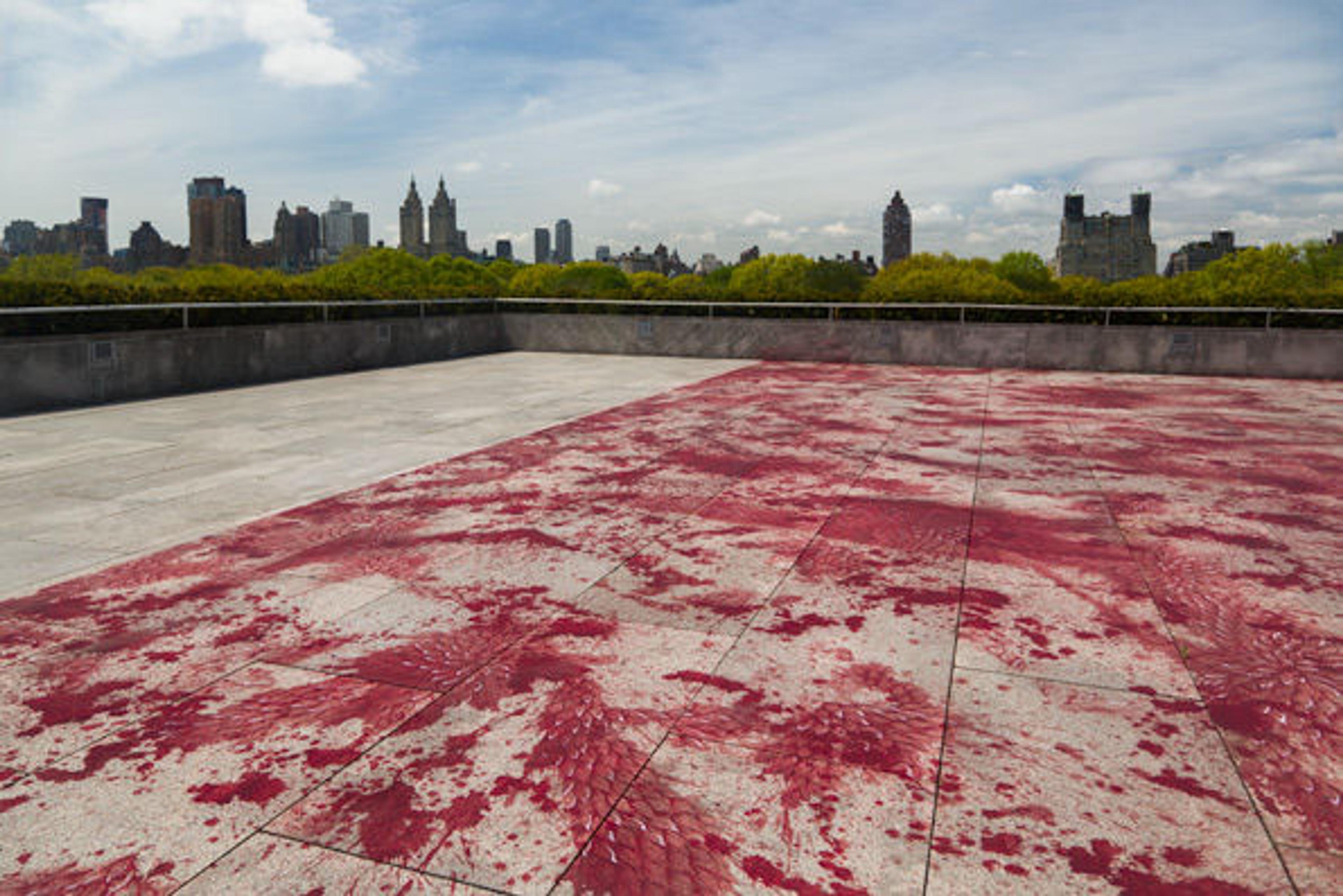
View of The Roof Garden Commission: Imran Qureshi on The Iris and B. Gerald Cantor Roof Garden
«Imran Qureshi's installation on the Met's Iris and B. Gerald Cantor Roof Garden is abrupt. Looking across the roof, one is confronted by something of a geological layering. In the foreground, violence and bloodshed come to mind, and behind, the Met's stone superstructure separates you from the immediacy of Central Park's seemingly dense forests. Looking down at your feet, your confidence is partially shattered by the realization that you are walking on paint. Instinctively, my feet searched for an oasis of untainted stone.»
The time of day played a major part in my reaction to the installation; humidity made the blinding sun more apparent, and the reflection off specks of mica and quartz in the stone meant that looking down even required squinting. Once we had sufficiently adapted to the environment, the Teen Advisory Group members talked about what we had just observed and our different reactions. The artwork inspires many possible interpretations, so it was easy to contribute to the discussion.
In my opinion, the abruptness of the roof space (many right angles) makes Qureshi's work, work. Walking from the rectangle that his work occupies to the unpainted floor, I immediately wonder what makes that transition almost too easy. It reminds me of occasions when my family and I are driving through suburbs on our way to a more exciting destination. Passing by homes and neighborhoods, socioeconomic status is apparent in the types of cars and sizes of homes. It seems like no one would want to live in the poorer areas, while the richer neighborhoods—often only a short distance away—inspire praise for their beautifully appointed houses and manicured lawns. In one setting, the danger seems apparent, while in the other, it may be less exposed but is likely still there. The allegory of abrupt neighborhood change applies rather well to Qureshi's work. The dull, blood-red patterns in his installation appear to be causes for alarm on the otherwise tranquil, unpainted roof, but which area is really more dangerous? The one where the danger seems obvious or the one in which it may be hidden? Should we ever be complacent in what we consider a safe area? And can one area really be completely independent of the other?